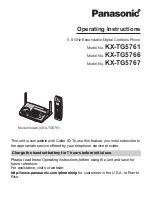
RIDING THE VEHICLE
Ice will also affect the control of the vehicle. Slow down and do not “gun” the
throttle. This will only result in spinning of the tires and the vehicle may possibly
tip over. Avoid rapid braking. This again can result in an uncontrolled slide and the
vehicle may possibly tip over or eject the passenger (2-UP models). Slush should
be avoided at all times since it could block the operation or controls of the vehicle.
When riding on a 2-UP models, never attempt this maneuver with a passenger.
Always remember that the vehicle handling and stability may be affected when
riding with a passenger.
Riding in snow may reduce the brakes stopping capability. Safely reduce speed
and allow greater distance for braking. Snow projection may cause ice build up
or snow accumulation on brake components and controls. Apply brakes fre-
quently to prevent ice or snow accumulation. Refer to
GENERAL OPERATING
AND SAFETY PRECAUTIONS
in this subsection for more detailed information
regarding riding on snow covered surfaces.
Riding on sand dunes, or on snow is another unique experience but there are some
basic precautions that should be observed. Wet, deep or fine sand/snow may cre-
ate a loss of traction and cause the vehicle to slide, drop off or become “bogged”
down. If this occurs, look for a firmer base. Again, the best advice is to slow down
and be watchful of the conditions. When you ride with a passenger (2-UP models),
drive slowly.
When riding in sand dunes it is advisable to equip the vehicle with an antenna type
safety flag. This will help make your location more visible to others over the next
sand dune. Proceed carefully should you see another safety flag ahead. Since the
antenna type safety flag can snag and rebound on your body if caught, do not use
it in areas where there are low hanging branches or obstacles. Always remember
when riding on a 2-UP model that the vehicle handling and stability may be affected
when riding with a passenger.
Riding on loose stones or gravel is very similar to riding on ice. They will affect
the steering of vehicle, possibly causing it to slide or cause passenger ejection
(2-UP models) and tipover especially at high speeds. In addition, braking distance
may be affected. Remember that “gunning” the throttle or sliding may cause
loose stones to be ejected rearwards into the path of another rider. Never do it
deliberately. Always remember on a 2-UP models that vehicle handling, stability
and braking distance may be affected when riding with a passenger.
________
SAFETY INFORMATION
________
55
Summary of Contents for Can-Am OUTLANDER 400 EFI 2014
Page 9: ...SAFETY INFORMATION ________ SAFETY INFORMATION ________ 7...
Page 71: ...VEHICLE INFORMATION _______________ 69...
Page 99: ...MAINTENANCE _______________ 97...
Page 131: ...TECHNICAL INFORMATION ______________ 129...
Page 140: ...SPECIFICATIONS This page is intentionally blank 138 ______________...
Page 141: ...TROUBLESHOOTING ______________ 139...
Page 147: ...WARRANTY ______________ 145...
Page 153: ...CUSTOMER INFORMATION ______________ 151...
Page 156: ...CHANGE OF ADDRESS OWNERSHIP This page is intentionally blank 154 ______________...
Page 157: ...CHANGE OF ADDRESS OWNERSHIP ______________ 155...
Page 158: ...CHANGE OF ADDRESS OWNERSHIP 156 ______________...
Page 159: ...CHANGE OF ADDRESS OWNERSHIP ______________ 157...
Page 160: ...CHANGE OF ADDRESS OWNERSHIP 158 ______________...
Page 161: ...NOTES...
Page 162: ...NOTES...
















































